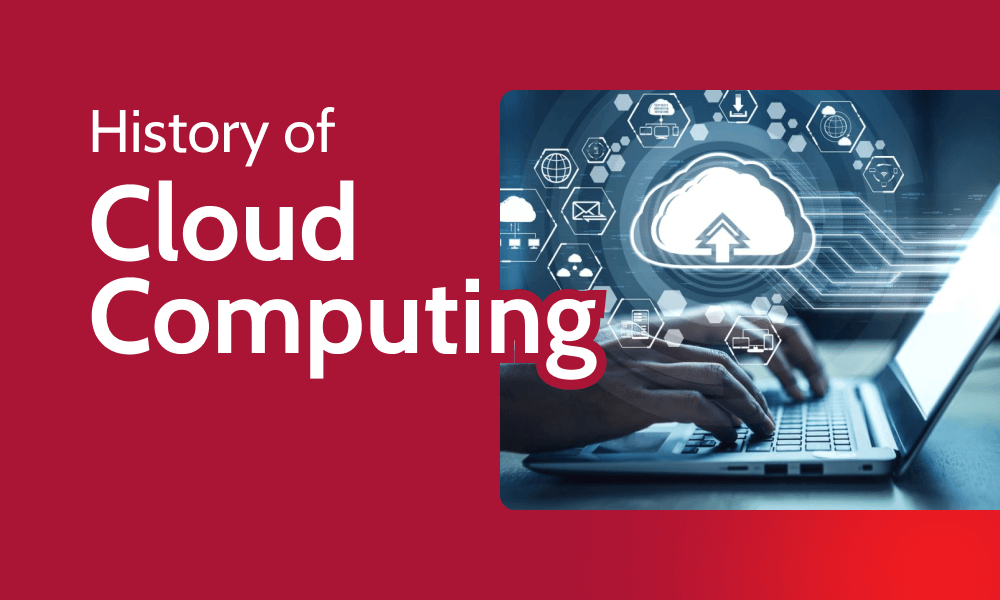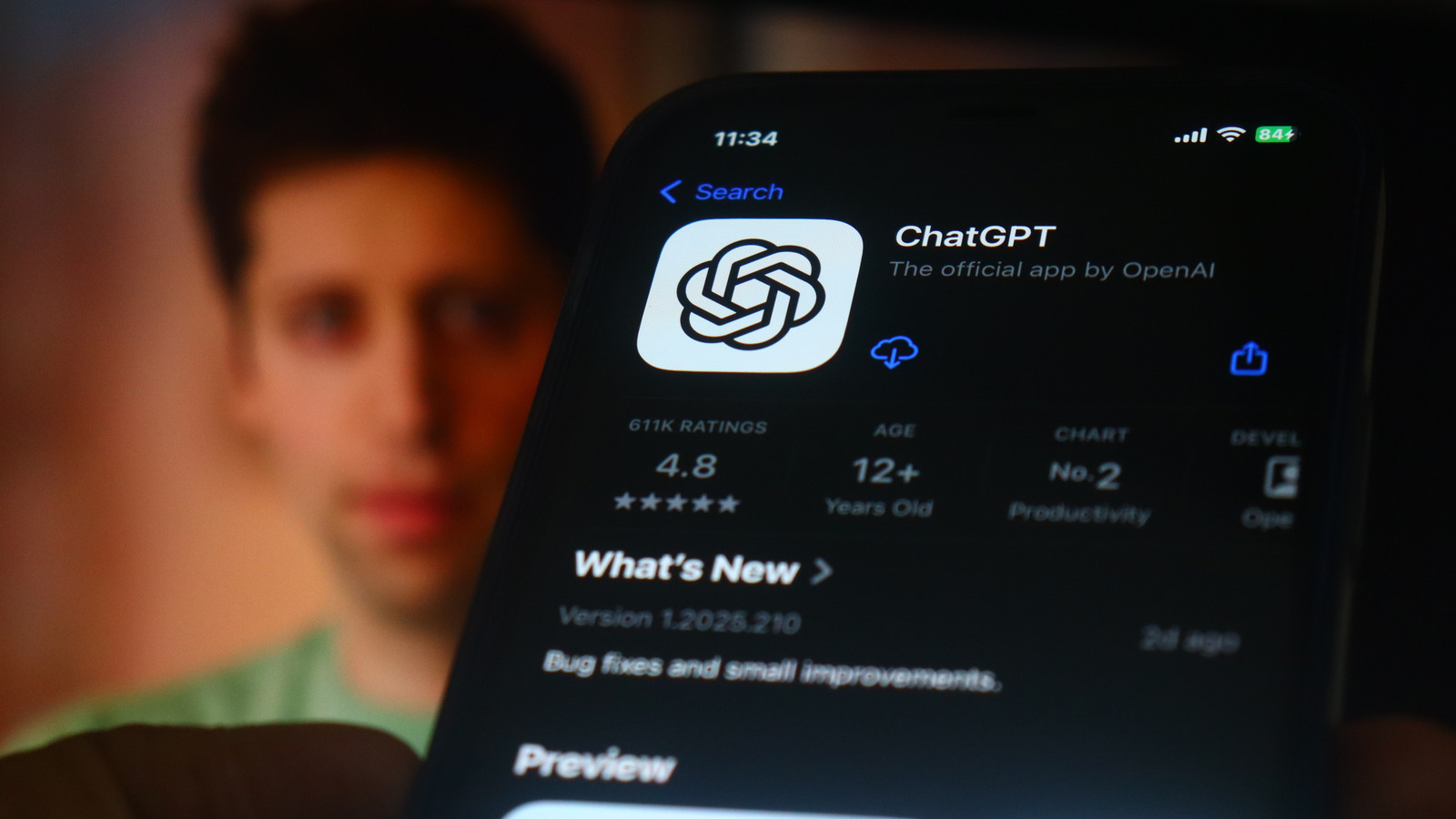The age of computers started with physical devices — you had to see and touch them to harness their processing power. However, things are different now; you no longer need to interact with a computer directly to use it, which is all thanks to cloud computing.
From sitting at our desks to floating in the virtual space of the internet, how did we arrive at cloud computing? Read on as we narrate the history of cloud computing through different periods, including the Advanced Research Projects Agency Network (ARPANET), the dot-com era and the rise of application service providers (ASPs).
What Is Cloud Computing?
Cloud computing is the delivery of computing resources — such as storage, networking and virtual machines — over the internet. It involves accessing physical computing devices remotely from anywhere in the world with an internet connection.
Unlike traditional computing that limits you to physical computing resources, cloud computing allows you to readily scale computing power within minutes. Furthermore, cloud computing’s main pricing framework is a pay-as-you-go model, which is typically more cost-efficient because you pay only for what you use.
The History of Cloud Computing Timeline
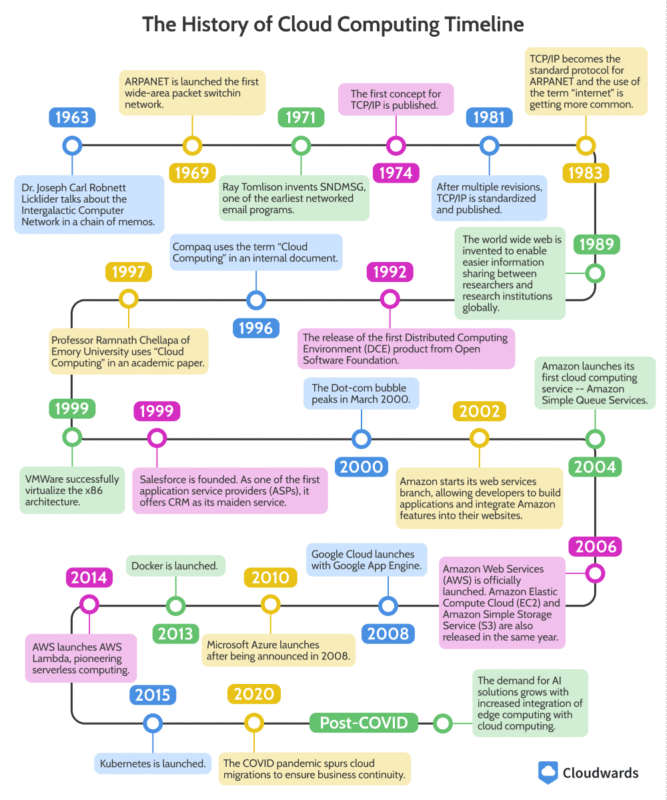
Work accomplished between the 1960s and 1990s laid the
foundation for modern cloud computing.
When Did Cloud Computing Start? The 1960s and ARPANET
The history of cloud computing began with the invention of the internet, one of its core components. The internet actually started out as ARPANET, a project funded by the U.S. Department of Defense’s Advanced Research Projects Agency (ARPA) in the 1960s.
Built in 1969, ARPANET was the first packet switching network for wide-area communication. It consisted of a computer network, including host computers and minicomputers called Interface Message Processors (IMPs). Its primary goal was to connect the U.S. military to research institutions over phone lines, but its uses expanded with time.
The earliest use of ARPANET involved Charley Kline — a member of Professor Leonard Kleinrock’s team at UCLA — who sent the word “LOGIN” to a computer at Stanford. This test was partially successful; the computer sent the first few letters but crashed at the letter “G.” These bugs were later fixed, and further connections produced better outcomes. With these improvements, more institutions joined ARPANET.
ARPANET initially ran using the 1822 protocol. In the decade following its invention, more protocols were created, including Network Control Protocol (NCP) and File Transfer Protocol (FTP). In 1971, Ray Tomlinson invented emails using a program called SNDMSG. Between 1973 and 1977, other networks such as SATNET, ALOHAnet and PRNET were developed.
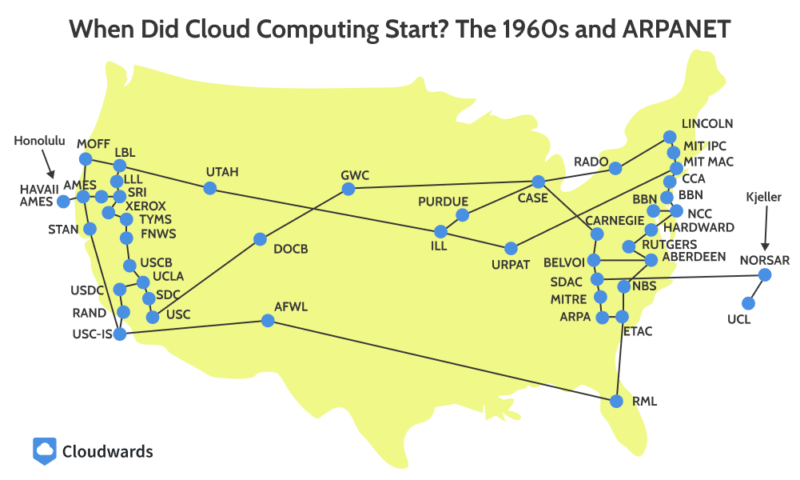
By 1974, ARPANET had expanded to include over 40 nodes
across the U.S. and two nodes in Europe.
The 1980s and the Invention of the IP Address
Following ARPANET’s invention, various protocols like Telnet, the 1822 protocol, NCP and FTP were created. In 1974, Vint Cerf and Robert Kahn published RFC 675, the earliest implementation of TCP/IP — one of the protocols still widely used on the internet today.
Over the years, RFC 675 was reworked a few times. In 1981, it became standardized as RFC 791 (Internet Protocol, or IP) and RFC 793 (Transmission Control Protocol, or TCP).
By 1983, TCP/IP had become the standard protocol for data transmission via ARPANET. Before that, ARPANET ran on NCP, which was better suited for simple two-way communication between computers. However, since TCP/IP supports more complex data transmissions, it eventually replaced NCP. The term “internet” gained wider usage once TCP/IP became the standard.
TCP ensures that packet data is assembled correctly when it gets to the receiver. It also keeps the connection live until all the data is delivered. Then, IP identifies and locates other computing entities within a network using labels called IP addresses.
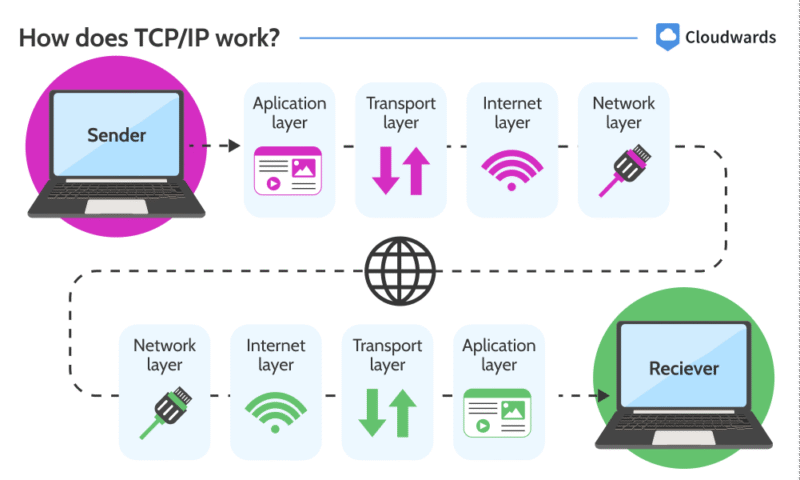
The TCP/IP protocol works in the transport layer (layer 4) of the OSI model.
In 1989, Tim Berners-Lee invented the World Wide Web (WWW) to facilitate automated information sharing among researchers and academic institutions globally. This invention coincided with a notable increase in personal computer ownership in the early 1990s, expanding the global computer network.
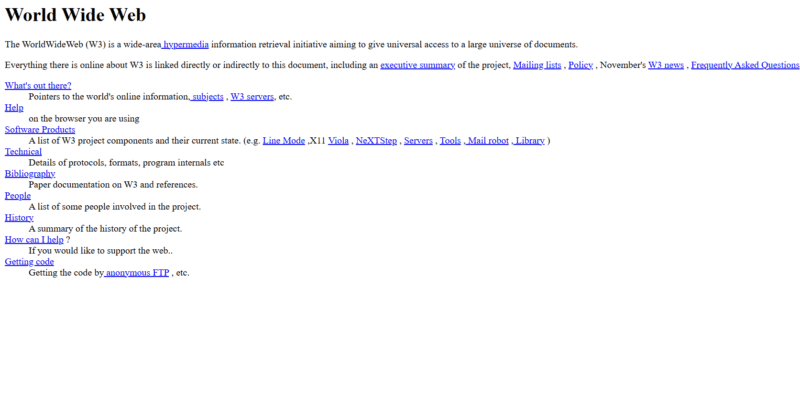
The first website went public on Aug. 6, 1991.
The expansion of the global computer network laid the foundation for cloud computing. Furthermore, more effort went into achieving distributed computing, with the Open Software Foundation’s Distributed Computing Environment (DCE) emerging as a notable outcome.
The idea of distributed computing had been theorized earlier, but DCE served as a breakthrough that provided a clear path toward managing resources over a network.
In 1996, one of the earliest uses of the phrase “cloud computing” was attributed to Compaq. Professor Ramnath Chellappa of Emory University is also credited for coining the term in 1997.
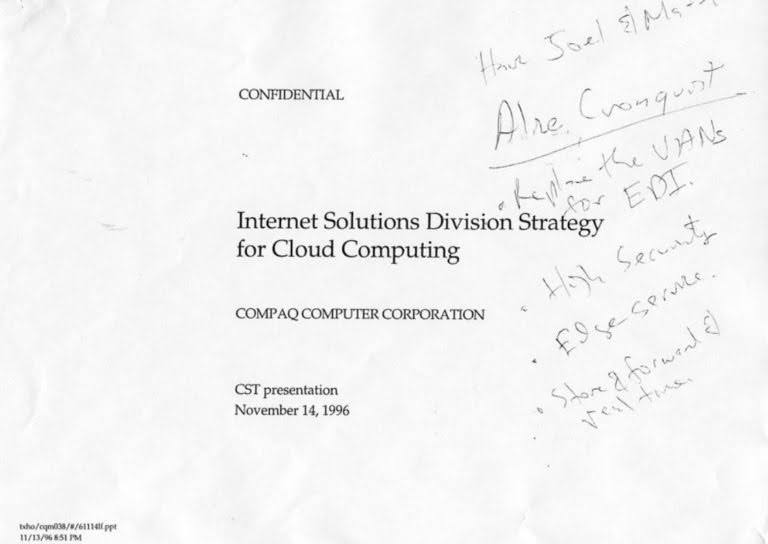
Compaq suffered from the dot-com bubble collapse, and Hewlett-Packard
(HP) acquired it in 2002 for $25 billion.
Although virtualization dates back to the 1960s, VMware and Connectix advanced the technology between 1997 and 2000, providing a practical approach to creating virtual machines. Moreover, their efforts further advanced the multi-tenancy approach of modern cloud computing.
The late 1990s marked the emergence of ASPs, the early equivalent of today’s Software-as-a-Service (SaaS) providers. Founded in 1999, Salesforce was one of those ASPs. It offers a customer relationship management (CRM) platform that users can rent over the internet without buying and installing software.
The 2000s and the Rise of Public Cloud Services
Many companies suffered financially when the dot-com bubble burst in March 2000. From 1995 to the bubble burst, companies and investors speculated about the growth of the World Wide Web and the internet. However, many of those companies failed to turn a profit even after massive investments, resulting in irrecoverable losses and bankruptcies.
Interestingly, some companies such as Amazon did make a profit, and others like Salesforce weathered the storm. Salesforce’s survival and the success of its CRM platform allowed it to grow and launch more services. Furthermore, its internet-based service delivery combined with its subscription pricing created a framework for the cloud providers that came later.
Building on the robust computing infrastructure powering its e-commerce business, Amazon launched its earliest implementation of Amazon Web Services (AWS) in July 2002. This version allowed developers to build on Amazon and integrate its features with their own websites.
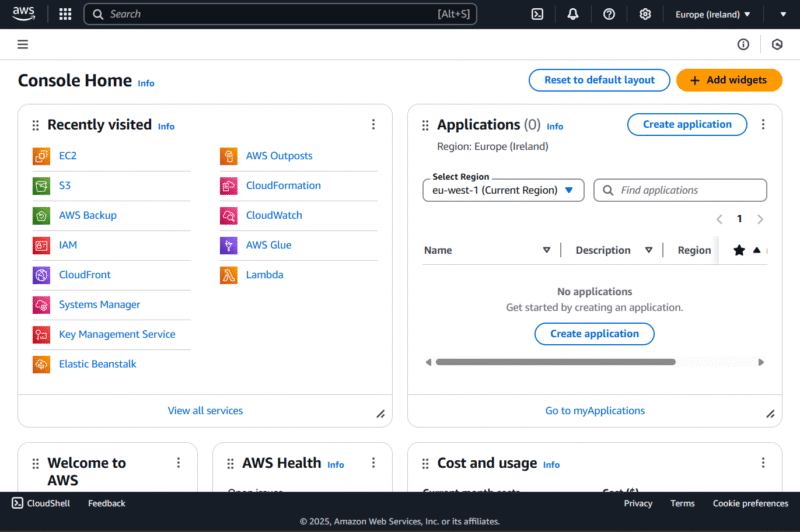
AWS currently dominates the cloud computing industry,
offering one of the largest service catalogs.
Amazon didn’t launch a true cloud computing service until November 2004, when it released Amazon SQS. It then launched Amazon S3 and Amazon EC2 in 2006, the year of the AWS platform’s official launch. These services were early leaders of the Infrastructure-as-a-Service (IaaS) delivery model.
In 2008, Google Cloud also entered the cloud computing market by building on resources in its large data centers. It launched Google App Engine, which pioneered the Platform-as-a-Service (PaaS) delivery model, particularly for app deployment services on managed cloud infrastructure.
Still reeling from the dot-com bubble burst, many companies sought efficient ways to adopt computing, the internet and the World Wide Web. This led to an increase in cloud adoption, especially from the mid-to-late 2000s.
During this period, many popular services in use today made significant advances. For example, Microsoft Azure was announced and Alibaba Cloud was founded. Netflix pivoted into SaaS streaming services, offering video on demand over the internet. Meanwhile, Dropbox began offering public cloud storage, and Rackspace started its web hosting service.
The 2010s and the Growth of the Cloud Computing Market
The cloud computing market continued to grow into the 2010s, and it even brought about one of the cloud industry’s biggest players — Microsoft Azure. Although Microsoft Azure officially launched in 2010, it has since become the second-largest provider by market share, beating out earlier competitors like Google Cloud and Alibaba Cloud.
By 2010, the three major cloud providers — AWS, Google Cloud and Microsoft Azure — had all entered the market, and they are still the biggest players to date. The year 2010 also marked the debut of OpenStack, a pioneering open-source cloud platform created by NASA and Rackspace.
Major cloud providers like Azure and AWS already had functional public and private clouds by this time. As a result, the concept of private and hybrid clouds continued to develop from 2011 onward.
As the mid-2010s approached, cloud computing experienced even more advancements. For instance, serverless computing emerged when Amazon launched AWS Lambda in 2014. In addition, Docker launched in 2013 followed by Kubernetes in 2015, paving the way for containers and microservices architecture.
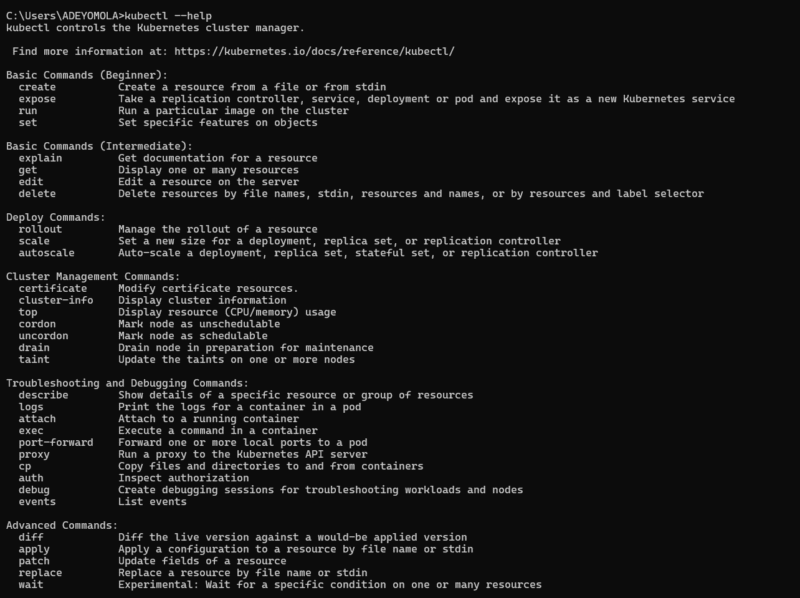
kubectl is the main command-line tool for managing Kubernetes.
Enterprise spending on cloud resources grew to $130 billion by 2020, up from a negligible amount at the start of the 2010s. The COVID pandemic contributed to this rapid growth as many businesses adopted the cloud to ensure business continuity and implement remote work.1
The 2020s and Beyond: Future Cloud Computing
Since the pandemic, cloud adoption has continued to grow rapidly. By 2020, the industry’s global revenue was estimated to be over $240 billion, and it’s projected to almost double to around $445 billion in 2025.2
The continued adoption of cloud computing throughout the 2020s is partly driven by advancements in artificial intelligence (AI) and machine learning. Cloud platforms provide scalable resources that are crucial for developing AI models and storing training data. Additionally, most cloud providers offer innovative AI products to their customers.

Amazon Rekognition is primarily used for facial detection
and analysis in images and videos.
The global network has become increasingly data-driven throughout the 2020s. This increased data dependency has led to a data explosion, driving the need for scalable storage offered by cloud providers and creating even more demand.
The current decade also came with an increased use of Internet of Things (IoT) devices. These rely on edge computing for near real-time operation, as well as cloud computing for large-scale processing.
More delivery models have evolved from IaaS, PaaS and SaaS, such as Container as a Service (CaaS) and Function as a Service (FaaS). With the continued growth of AI, it’s no surprise that the AI-as-a-Service (AIaaS) model is becoming increasingly widespread.
Besides AIaaS and everything AI-related, cloud providers are working to integrate quantum computing in the cloud to solve complex problems in science and other fields. Furthermore, many providers are adopting sustainable practices to support a greener cloud, enhance cloud security, and increase accessibility with more low-code and no-code services.
Final Thoughts
Cloud computing began with the internet and early concepts of computer networks. It evolved with various breakthroughs at different points over the past five to six decades, and it is headed toward an AI-centric, sustainable and highly accessible future.
What was your first impression of cloud computing? What do you think of its AI-centric prospects? In your opinion, what’s the most exciting thing about the future of cloud computing? Share your views with us below. Thank you for reading.
FAQ: The Evolution of Cloud Computing
-
Cloud computing was first theorized by Dr. Joseph Carl Robnett Licklider in 1963 when he discussed the Intergalactic Computer Network. In 1969, his theories eventually inspired the creation of ARPANET, the first version of the internet.
-
The evolution of the cloud began in the 1990s. It moved from distributed computing, virtualization and application service provision to its current state.
-
Cloud computing has gone from renting specific applications over the internet to providing scalable, on-demand resources that we use for almost everything digital.
-
The three basic components of cloud computing are data centers (backend platform), a network and a client (frontend platform).
Sources:
- World Bank – Advancing Cloud and Data Infrastructure Markets
- Yahoo Finance – Global Cloud Computing Market Report – 2022

